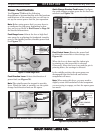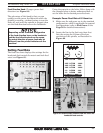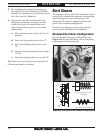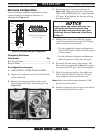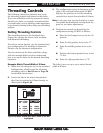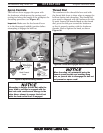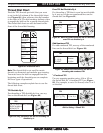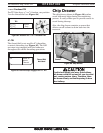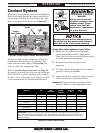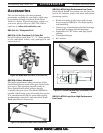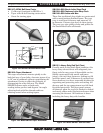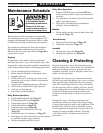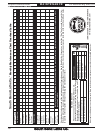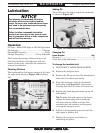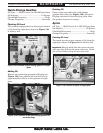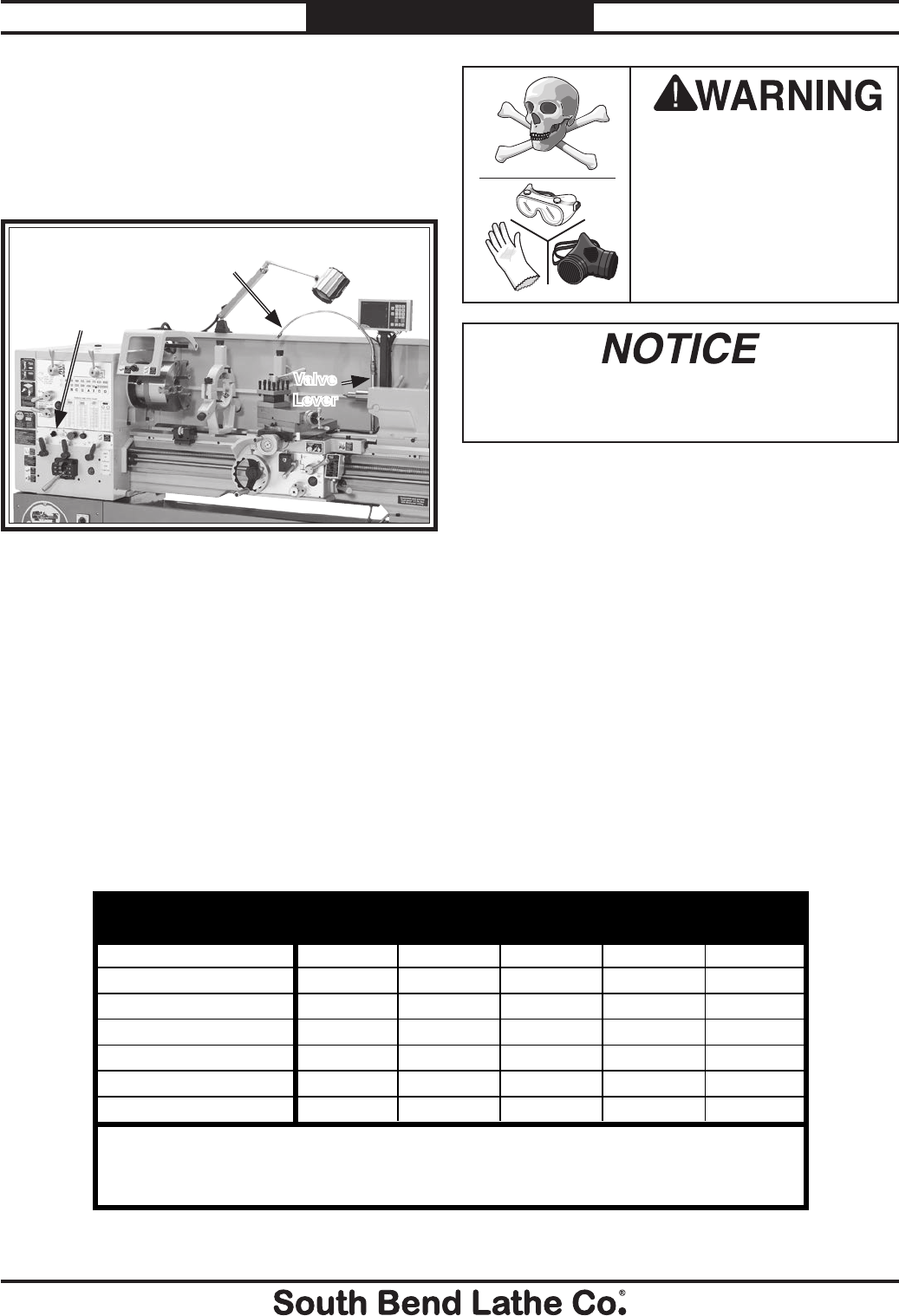
-62-
For Machines Mfg. Since 3/11
16-Speed Gearhead Lathe
OPERATION
Always use high quality coolant and follow the
manufacturer's instructions for diluting. The
quick reference table shown in Figure 98 can
help you select the appropriate fluid.
Refer to Coolant System Service on Page 72
for detailed instructions on how to add or change
fluid. Check the coolant regularly and promptly
change it when it becomes overly dirty or rancid,
or as recommended by the fluid manufacturer.
To use the coolant system on your lathe:
1. Make sure the coolant tank is properly
serviced and filled with the appropriate
fluid, and that you are wearing the necessary
personal protection equipment.
2. Position the coolant nozzle for your
operation.
3. Use the coolant pump switch on the control
panel to turn the pump ON.
4. Adjust the flow of coolant by using the valve
lever near the base of the nozzle hose.
Important: Promptly clean any splashed fluid
from the floor to avoid a slipping hazard.
X X
X X X
X X X X
X
X X
X X X X
X X X X
Aluminum
Brass
Bronze
Cast iron
Low Carbon Steel
Alloy Metals
Stainless Steel
General Note: Coolants are used for heavy-duty lathe operations and production turning. Oil-water
emulsions and synthetic cutting fluids are the most common for typical lathe operations. Sulferized oils
often are used for threading. For small projects, spot lubrications can be done with an oil can or brush, or
omitted completely.
Workpiece Dry
Water
Soluble Oil
Synthetic
Coolants
Sulferized
Oil
Mineral
OIl
Figure 98. Coolant selection table.
Coolant System
When the coolant pump switch is turned ON, the
fluid is delivered through the nozzle attached to
the carriage. The flow is controlled by the valve
lever at the base of the nozzle (see Figure 97).
Running the pump without adequate fluid in
the coolant tank may permanently damage it,
which will not be covered under warranty.
Figure 97. Coolant system controls and components.
Nozzle
Valve
Lever
Coolant
Pump Switch
BIOLOGICAL & POISON
HAZARD!
Use the correct personal
protection equipment when
handling coolant. Follow
federal, state, and fluid
manufacturer requirements
for proper disposal.



